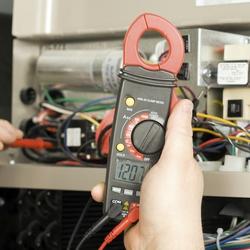Heat Pump vs Gas Furnace: Which is Best for My California Home?
Residents of Southern California have a few options when it comes to heating their homes:
- Install a gas furnace: Gas furnaces generate heat through a combustion process with natural gas as its fuel source.
- Install a heat pump: Heat pumps don’t generate heat themselves. Rather, they take heat energy from outside the home and transfer it inside.
- Install a dual-fuel system: A heat pump is installed as the home’s primary heat source. When temperatures drop below a certain threshold, a propane furnace system kicks in.
The three systems above have pros and cons and no one system is the best match under every condition. The goal of this blog is to help you determine which system is right for you, looking at factors such as:
If you have questions at any point while reading this blog, don’t hesitate to reach out to the experts at True Home. Our comfort specialists have no motives outside of helping you find the right system for your home based on the factors above.
Upfront installation costs
Heat pumps and furnaces have different upfront costs when installed by a professional. If all you’re looking for is a heating system, then a furnace is the most affordable option. But if you need a cooling system to go along with it, then the heat pump (which combines both heating and cooling into one system) is your best choice.
True Home’s average installation pricing confirms this:
- Average AC + furnace installation combo: $9,000
- Average heat pump installation: $6,500
Furnace installations have another price factor that may come into play, and that’s the cost of installing a new gas line. If your home needs a gas line installed, it could cost anywhere from a few hundred dollars to $1,000 or more.
That covers heat pump and furnace installation costs. But what about the cost of a dual-fuel system?
Well, a dual fuel system uses both a heat pump and a furnace. Based on True Home prices, you’ll be paying just over $10,000 for both systems. But a number of factors can change this pricing, such as:
- You already have a heat pump installed in your home
- You already have a furnace installed in your home
- You have both systems installed, and just need to reconfigure both systems to work in conjunction with one another.
Cost savings over time
When answering the question of whether a heat pump or furnace is right for your home, it’s important to consider how much each system will cost to run in the long term.
Two factors come to mind here: the system’s lifespan and the system’s fuel cost.
- System lifespan: The longer you can put off replacing your system, the more you’ll save in the long run. And the clear winner here are furnaces. Furnaces last between 15 and 20 years. Heat pumps last between 10 and 15.
- Fuel costs: Powering a furnace with natural gas is usually more affordable than powering a heat pump with electricity. This is especially true in colder weather climates when a heat pump’s electric heat strip is required to keep temperatures inside the home at a comfy level.
Average winter temperatures
When temperatures reach the mid-30s or lower, the cost of running a standard heat pump can skyrocket. That’s because heat pumps at these temperatures can no longer absorb enough heat from the outside air to push into your home. To compensate for this, an electric heating strip turns on to provide enough heat to warm the home.
The problem, as we noted above, is cost. Those electric heating strips require a lot of energy and are nowhere near as energy efficient as a furnace powered by natural gas.
This is when having a furnace or a dual-fuel heat pump system really begins to pay for itself.
So just how often does the Inland Empire reach temperatures in the mid-30s or lower?
Well, it certainly isn’t unheard of to see temperatures fall below 35 degrees in certain areas of Southern California in the wintertime. Cities such as San Bernardino, Murrieta, and Temecula have nights that dip below freezing temperatures a few times a year.
If you need help deciding if a dual system is right for you, ask a True Home professional. We’ll tell you how much energy savings you can expect from a dual system, and then let you decide if it’s worth the cost.
Family comfort
Heat pumps blow warm air inside the home at temperatures between 90 and 100 degrees. These temperatures may seem downright chilly to those accustomed to furnace temperatures, which deliver heat within the 130 to 140-degree range.
The higher temperatures of the furnace are best matched with lower-temperature areas. But some families just have a preference for how one feels over the other. Regardless, if you have questions about the heat output for either of these systems, a True Home technician can help you answer them.
Can’t decide? Give True Home a call!
Whether you’re considering a furnace, a heat pump, or both, a True Home comfort specialist can help you decide which one is right for your home. Give us a call at 949-288-2024, or schedule your free estimate online today!
